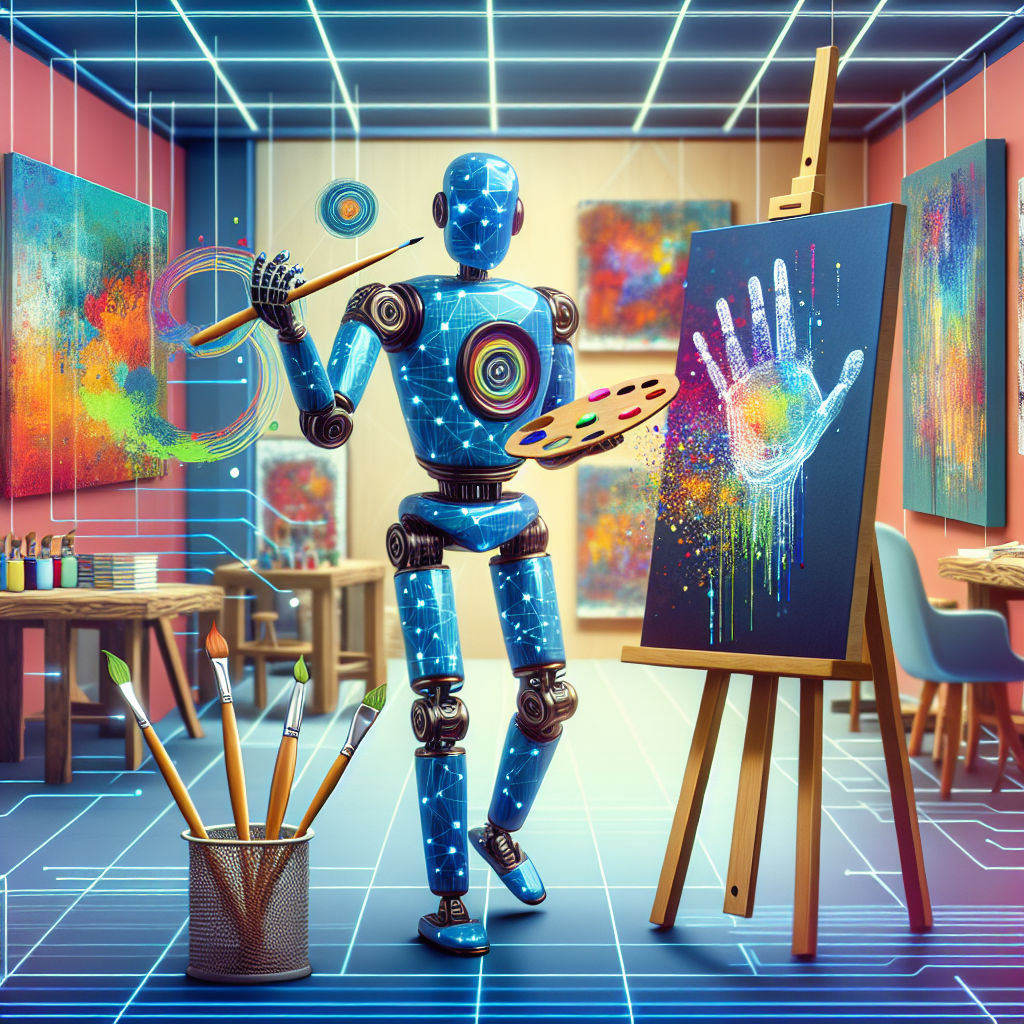Art has always been a form of creative expression and a way for artists to showcase their unique perspectives and talents. However, with the rise of technology and artificial intelligence (AI), the business of art is undergoing a significant transformation. The creative entrepreneur is a new breed of artist who is using AI to enhance their creative process, reach a wider audience, and ultimately change the way art is produced and consumed.
AI is revolutionizing the art world in many ways, from assisting artists in creating new works to helping them market and sell their pieces. One of the most significant impacts of AI on the business of art is its ability to analyze data and trends to help artists understand what sells and what doesn’t. This allows artists to tailor their work to meet the demands of the market, increasing their chances of success.
AI is also being used to create art itself, with algorithms generating unique and innovative pieces. This has opened up new possibilities for artists, allowing them to explore new styles and techniques that were previously inaccessible. AI-generated art has even made its way into galleries and museums, challenging the traditional notions of what constitutes art.
The rise of the creative entrepreneur is also changing the way art is marketed and sold. With the help of AI, artists can now reach a global audience through online platforms and social media, bypassing traditional galleries and dealers. This has democratized the art world, making it more accessible to a wider range of collectors and enthusiasts.
However, the rise of AI in the business of art has also raised questions and concerns. Some worry that AI-generated art lacks the human touch and emotion that is essential to art. Others fear that AI will replace human artists altogether, leading to a homogenization of creativity and a loss of individuality.
Despite these concerns, the creative entrepreneur is embracing AI as a tool to enhance their creativity and reach new heights in their artistic endeavors. By leveraging the power of AI, artists are able to push the boundaries of what is possible in art, creating works that are truly groundbreaking and innovative.
FAQs:
Q: How is AI being used in the business of art?
A: AI is being used in a variety of ways in the business of art, from analyzing data and trends to helping artists create new works. AI algorithms can generate unique pieces of art, analyze market trends, and even help artists market and sell their work.
Q: Is AI-generated art considered to be authentic?
A: The authenticity of AI-generated art is a subject of ongoing debate in the art world. While some argue that AI-generated art lacks the emotional depth and human touch of traditional art, others see it as a new form of creativity that pushes the boundaries of what is possible in art.
Q: How can artists benefit from using AI in their creative process?
A: Artists can benefit from using AI in a variety of ways, such as creating new works, analyzing market trends, and reaching a wider audience. AI can help artists understand what sells and what doesn’t, allowing them to tailor their work to meet the demands of the market.
Q: Will AI replace human artists in the future?
A: While some fear that AI will replace human artists altogether, most experts believe that AI will simply complement human creativity, rather than replace it. AI can be a powerful tool for artists to enhance their creativity and reach new heights in their artistic endeavors.
In conclusion, the rise of the creative entrepreneur and the use of AI in the business of art are changing the way art is produced, marketed, and consumed. AI is enabling artists to explore new styles and techniques, reach a wider audience, and push the boundaries of creativity. While there are concerns about the impact of AI on the authenticity of art, the creative entrepreneur is embracing AI as a tool to enhance their creativity and create truly innovative works. The future of art is being shaped by the creative entrepreneur and the possibilities that AI offers for artistic expression.

